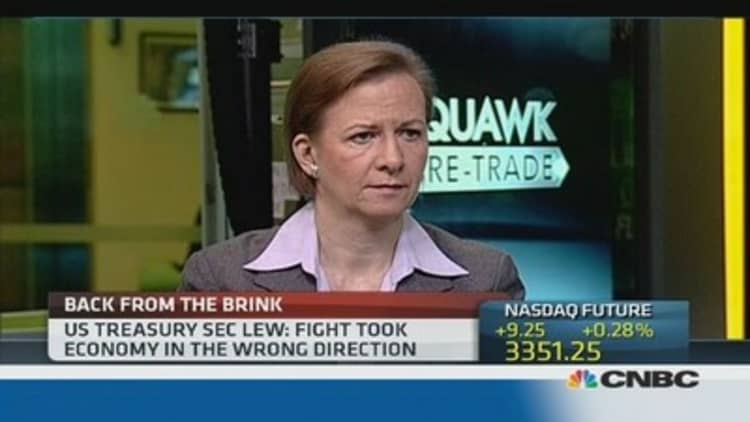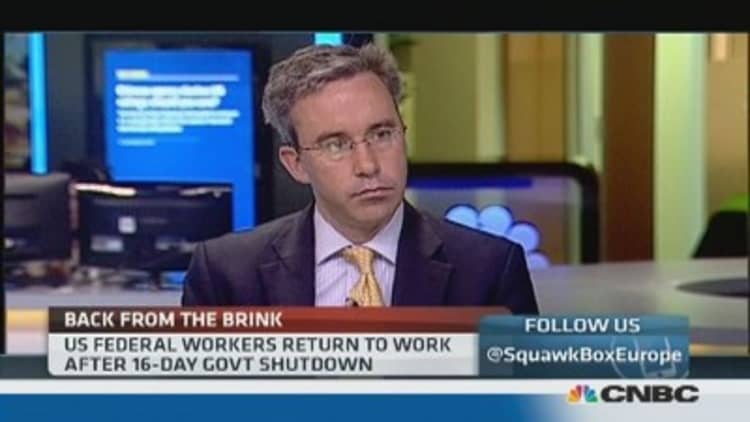
The 11th hour spending solution reached in Washington last week hasn't dissuaded Societe Generale on its aggressive call for a spike in U.S. Treasury yields, with Michala Marcussen, global head of economics at the French lender predicting that the 10-year benchmark interest rate could hit 6 percent in 2017.
"We still have an aggressive call out there in terms of the interest rate dynamic," she told CNBC Monday.
"Come the end of 2017 we actually think the Fed's fund rate could be close to somewhere around the 6 percent mark."
(Read More: Treasury Yields Will Spike to 5%: Societe Generale)
Back in June, SocGen made a bold prediction that they expected the U.S. Federal Reserve to start moderating its bond-buying stimulus program, which has so far suppressed yields in recent years to record lows, in the autumn of this year and bring it to an end at the turn of the year. The bank also predicted 10-year U.S. Treasury bond yields would hit 3 percent by Spring next year and rise to 5 percent by 2017.
Such a big move in yields that are used as a benchmark across the world has the potential to roil markets.
This week brings a deluge of U.S. data following delays due to the partial government shutdown, with the closely watched non-farm payrolls report slated for Tuesday. But in contrast to SocGen's June prediction, analysts now say that given the impact of the shutdown, the Fed will likely delay any reduction in its bond-buying program.
(Read More: US Treasurys? No thanks, I'll take bank debt)

Economists at IHS Global Insight predict that the loss of government services during the three-week shutdown will take a roughly $3.1 billion bite out of gross domestic product (GDP) in the U.S..
That represents the hit from lost government services. The shutdown also forced non-government business losses, temporary layoffs and other interruptions in business spending. The full extent of the damage won't be known for some time. Economists at Standard & Poor's estimate the total cost at about $24 billion, or a 0.6 percent GDP haircut. Others estimate about half that.
(Read More: What do you expectfrom September's US jobs data?)
Marcussen said that Societe Generale still thinks the U.S. can manage a sustainable recovery, but conceded that any fiscal uncertainty next year would alter their forecasts. The agreement approved last week restores budget authority only until January 15 at current spending levels and extends the Treasury's borrowing authority until February 7.
"One piece of good news is that we do have the midterm elections in November 2014 and hopefully Washington will be a bit scared as we get closer to that date, as voters will remember what's been going on in terms of the fiscal side and that that would push them into a more durable solution," she said.
"We do expect the Fed will taper probably coming into the spring of next year."
— CNBC.com's Matt Clinch. Follow him on Twitter @mattclinch81





